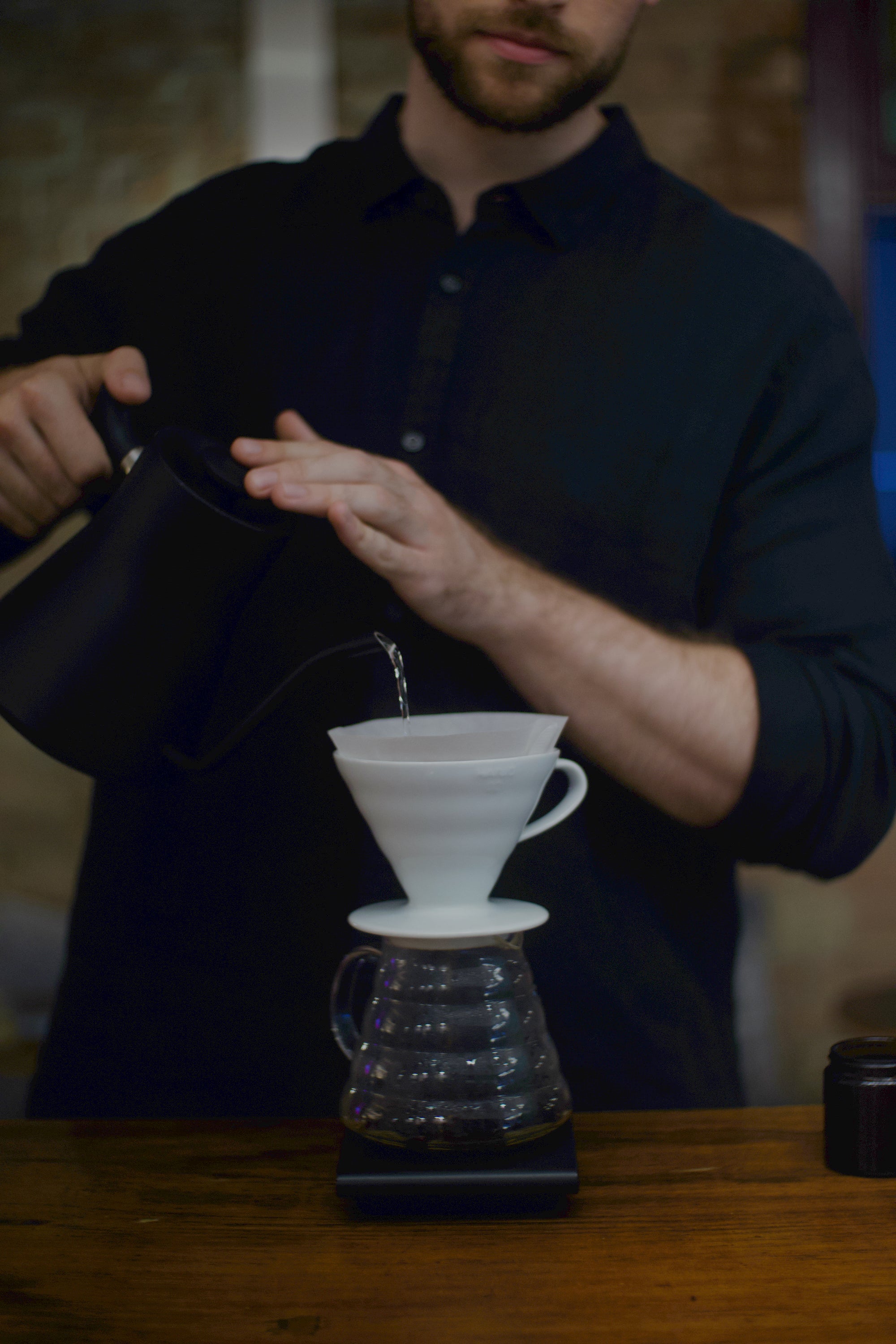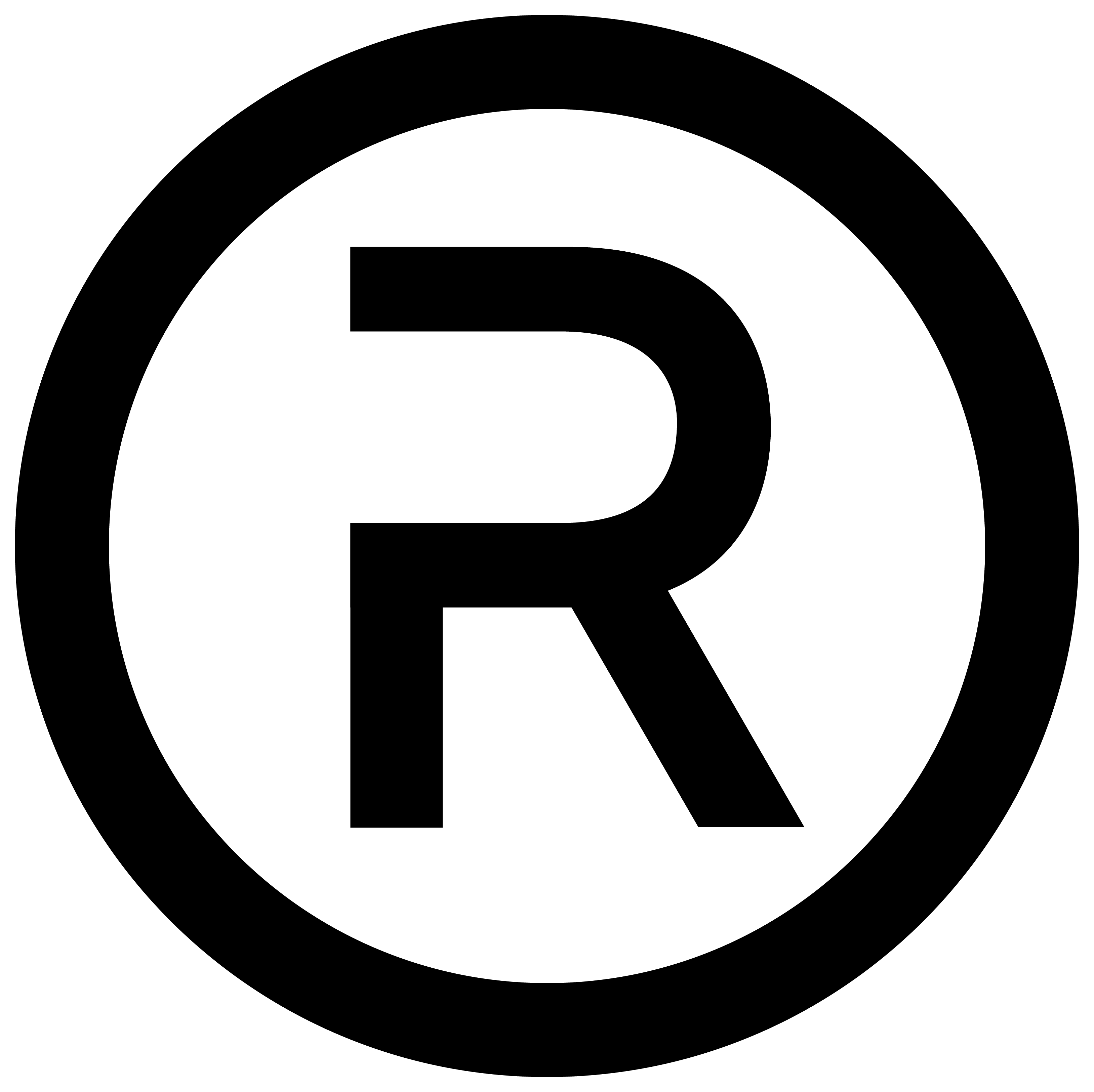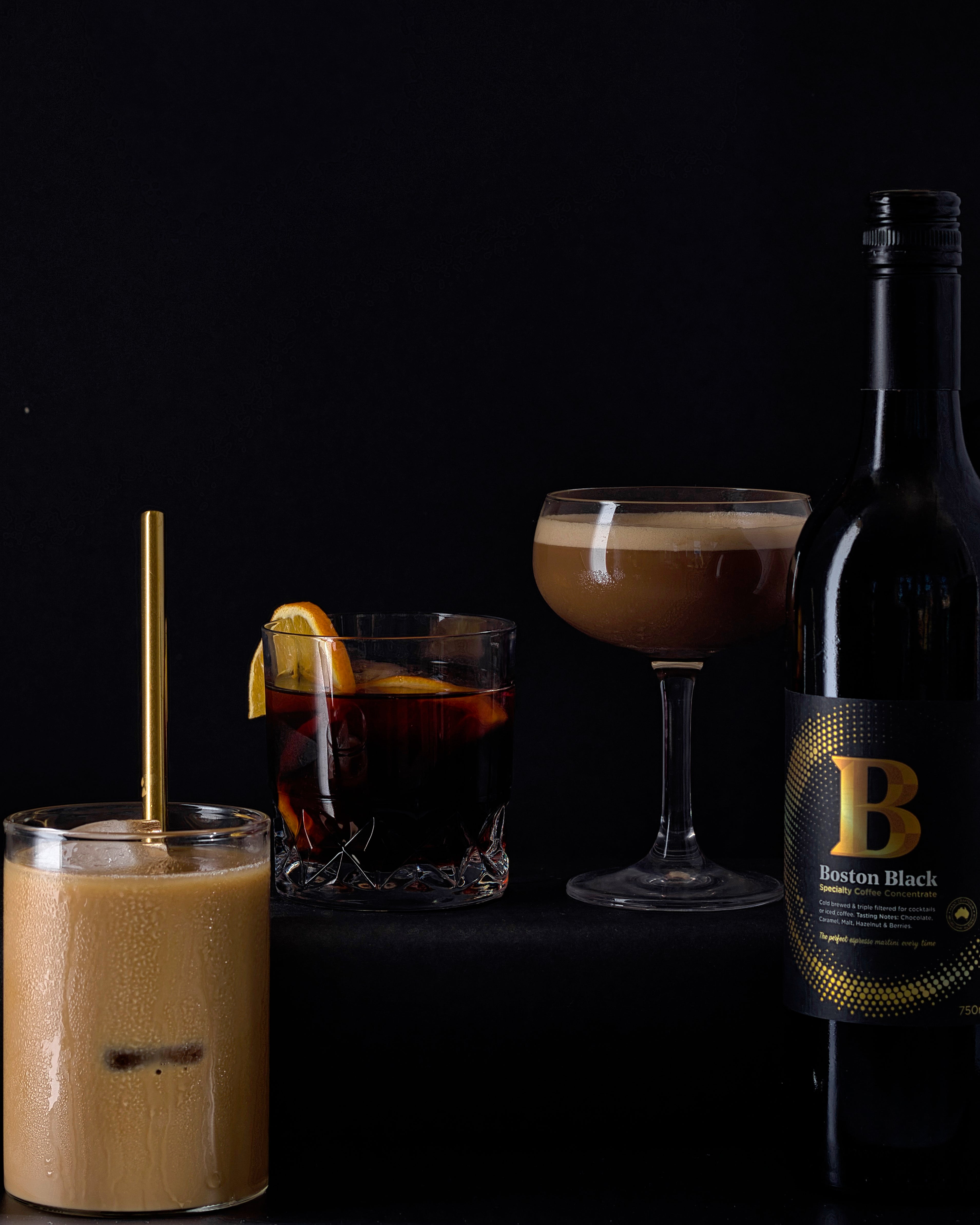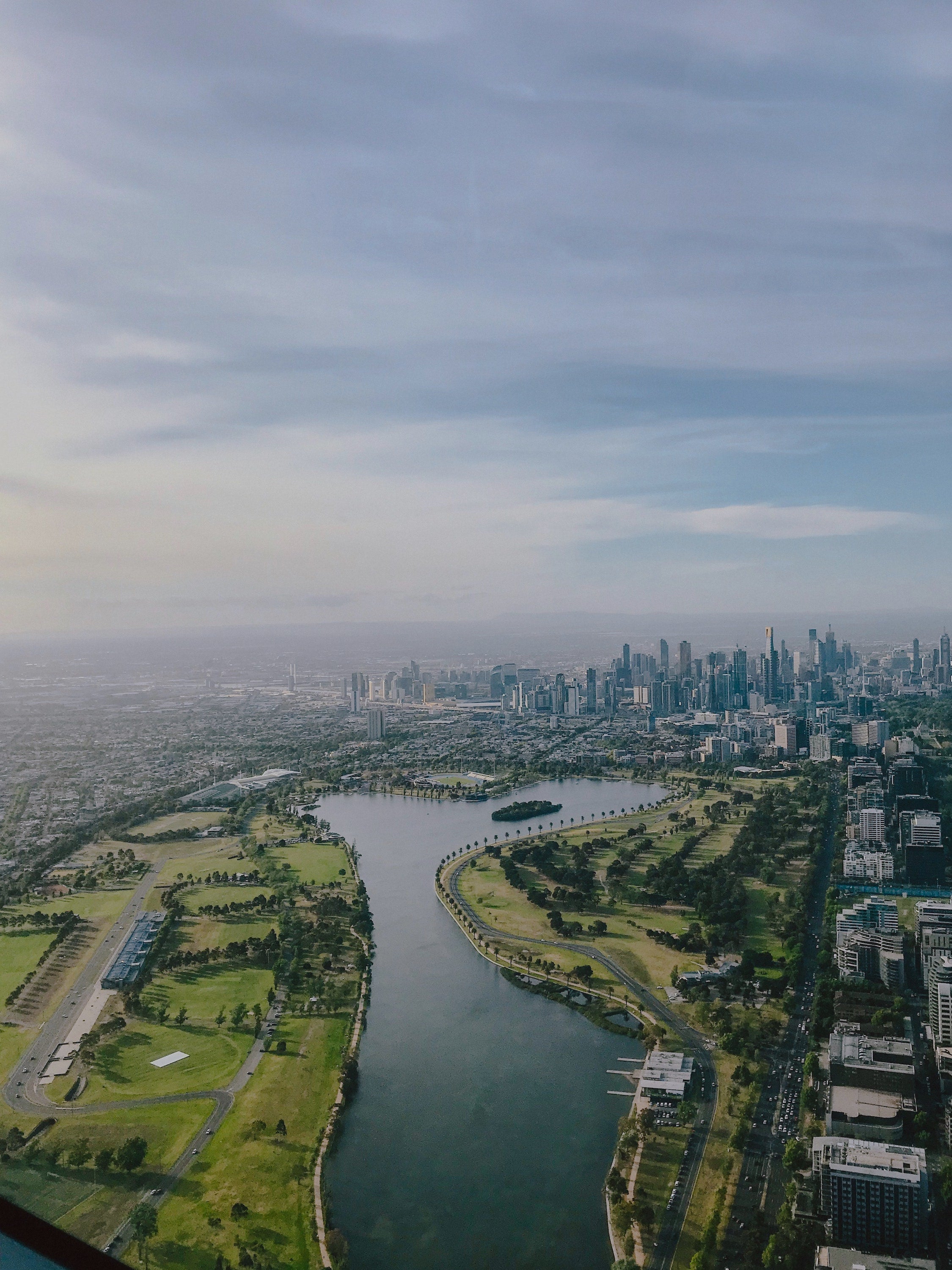
8 Things You Need to Know About Pour Over Coffee
Some coffee places are starting to look like science labs...
With the amount of coffee equipment you can brew a coffee with growing every year, you might have been wondering what all of the funnel tools are that are popular in specialty coffee venues. These devices all belong to a category of specialty coffee known as 'pour over coffee'.
Pour over coffee first became popular in the 1950s, all because Amalie Auguste Melitta Bentz found the taste of the coffee in her percolator to be too bitter. After fashioning her own makeshift filter device using a brass pot and some blotting paper, the Melitta pour over device was born.
The design of the filter device allows the coffee grounds to have a larger surface to filter against, allowing for more light flavours of the coffee to come through. Now, over many decades, the pour over coffee scene has grown to produce a wide range of devices and brewing methods that are loved by baristas and home enthusiasts today.
So, here are our handpicked 8 things you should know about pour over coffee...
1. Most Popular Tools for Pour Over Coffee are the Chemex and the Hario V60
The most popular devices we see across Australia for making pour over coffee are the Hario V60 dripper, and the Chemex Pour Over Glass Kit. Both of these devices feature the key parts you need to make a damn good filter coffee. A wide funnel and matching filter paper that sits flush in the funnel to allow the extracted brewed coffee to trickle down to the collecting jug beneath.
If we had to choose which one to pick, we'd be looking to ask 'How many coffees do I need to make?'. The V60 dripper is most popularly as a one cup or two cup quantity. Whereas, the Chemex can range from 3 cup, 6 cup, 8 cup and 10 cup (holding a massive 1.5 litres of coffee)! So you can have one big pour over party with your friends!
2. When dosing out your coffee, aim for a coffee to water ratio of about 1:16
When it comes to a recipe, pour over coffee is not supposed to be a concentrated short coffee like an espresso. Pour over coffee devices produce larger quantities of drinks ready to consume that aren't typically mixed with milk. When we brew, as a rule of thumb, we use a ratio of 1:16 of coffee to water. This means, in our 2 cup Hario v60 Drippers, we put 15g of ground coffee in and pour a total of 240g of water on top. The actual amount of brewed coffee that we collect afterwards will be less, because some water is absorbed into the grounds and not extracted. So this ratio applies to when you are making the coffee and the amount of water you will need when pouring.
3. Pour overs come packed with a lot of caffeine! More Caffeine per millilitre when compared to a latte of the same size.
For anybody with a large to do list, pour over coffee might just be your new best friend. Coffee brewed with devices such as the Hario V60 or Chemex contain more caffeine per mL of water in comparison to drinks such as long black, lattes and cappucinos. There are much more millilitres of water passing over the bed of ground coffee, and each mL is soaking up the caffeine and flavours of the coffee as they extract. To understand how other methods compare, take a look at this article by the guys at Coffeeness.
4. Water quality matters! Use filtered water to keep the taste consistent.
Water quality is very important in coffee brewing in general, but we'd say it's even more important when making pour overs. Because pour overs require more water for each serving to be produced, the soft/hardness of the water can really impact the extraction of the coffee. When we talk about water softness or hardness, we're really talking about the concentration of small charged particles called ions in the water. These particles affect how the tasty molecules in the coffee bean are extracted. So, too much of these ions can reduce your coffee taste significantly. As a best practice, we recommend filtering the water before heating the water in the kettle to keep the taste of your coffee, and your kettle, happy.
5. Grind size can vary but aim for a medium-fine grind size.
Now that we're in the realm of filter coffee, we don't want to use espresso beans on an espresso grind setting. So make sure you're using coffee that's ground for filtering, meaning a slightly larger grind size. If you're unsure, you can always ask your local barista to grind it for a pour over, and they'll know what works best on their grinder.
If you feel your pour over coffee is tasting too weak, then you can grind more finely for your next pour over. But if the water is dripping through the coffee too quickly, then coarsen up the grind.
6. Pour over coffee needs to release some gas... but don't worry its just carbon dioxide!
When your first pour hot water on ground coffee, you'll notice a foamy bubbly mixture forming very quickly. The coffee grounds aren't being stirred, so where are the bubbles coming from? The coffee! Coffee contains stored carbon dioxide molecules that are slowly released from when the coffee is roasted. But this process suddenly speeds up when the ground coffee is hit by the hot water. So when making a pour over, we encourage this gas to quickly escape and we let the coffee sit for a bit to degas.
This is known as blooming the coffee, which is why every pour over recipe asks you to pour a small amount of water on the beans (we do around 40 mL) and wait for 30 seconds whilst the coffee 'blooms' and degasses (ridding itself of the stored carbon dioxide).
7. Our favourite pour over recipe
We can't make it this far without detailing how we, at Rosso, like to make our pourovers. So here it is, how we brew up a pour over with our favourite single origin coffees:
1. Take 15g of filter roasted beans ground to a medium-fine grind size and place inside dampened filter paper in the pour over device.
2. Pour 40 ml of heated filtered water (we like to go for around 94 degrees Celsius) on to the ground coffee. This will encourage the blooming, so we leave this to settle for 30 seconds.
3. After 40 seconds, pour an additional 100 mL of hot water on to the grounds and wait until the water drains just above the coffee grounds.
4. Continue to pour another 100mL of water so that a total of 240 mL of water has been poured.
5. Collect your filtrate and enjoy! Note: we expect the total time to take between 2-3 minutes. If it's much longer than this, it suggests we need to coarsen up the grind size. If it's much quicker than 2 minutes, we expect we'll need to grind the coffee more finely as it will probably taste a little too watery.
8. Pouring Shapes! Different recipes call for different pouring styles
How you pour your water into the pour over device can actually affect the rate of extraction, and therefore the taste of your coffee. We like to keep things simple over here and we just pour in nice open circles on to the coffee bed. But some people swear by drawing intricate spirals or changing direction. We'll leave this one up to you to experiment with.
One key thing we do suggest is that you avoid pouring the water straight into the middle, as this will create a hole in the coffee bed, which will lead to lots of water coming through into the filtrate, and lots of untouched coffee leading to poor extraction.



Leave a comment
This site is protected by hCaptcha and the hCaptcha Privacy Policy and Terms of Service apply.